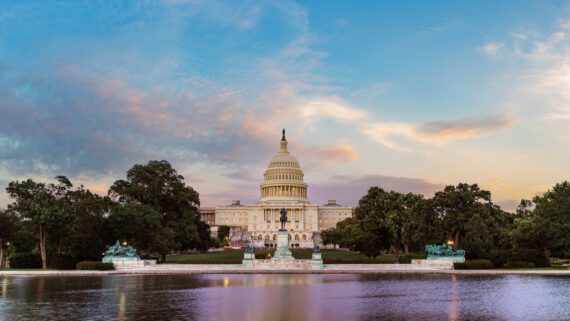Normally, we don’t hear about the U.S. government debt limit because Congress routinely approves requests to raise it to avoid default. It’s different this spring. Some Republican members of the House of Representatives are demanding substantial cuts in federal spending in exchange for voting to raise the debt ceiling.
At this writing, it is unclear what those cuts would be. But it would be impossible to reduce the national debt significantly without deep cuts to programs for lower-income Americans. President Biden opposes such cuts.
Exceeding the authorized debt limit would mean that the U.S. government has effectively run out of money. The Congressional Budget Office expects this to happen in June or July if Congress does not raise the debt ceiling.
Nearly everyone would be affected by default on the debt. It would immediately cause a deep recession. Moody’s Analytics, respected worldwide for its financial risk analysis, modeled a default scenario in March 2023. Its results: loss of an estimated 7 million jobs and $10 trillion in household wealth.
The likelihood of a national hunger crisis and other consequences for ordinary Americans has received far less attention. Here, I’ll describe the implications of default for people who are at risk of food insecurity.
One in four Americans participates in a federal nutrition program. Groups of people immediately cut off from benefits would include:
- millions of children who receive free school meals
- half of all babies born in this country, who benefit from the Women, Infants, and Children (WIC) program, along with their mothers and siblings younger than 5
- participants in the Supplemental Nutrition Assistance Program (SNAP)—an average of 42 million monthly
- people turning to food banks because much of the food provided is government-funded
Another group that would be disproportionately affected is the 67 million seniors and people with disabilities who receive Social Security. Their checks would be delayed or simply not issued. Most Social Security beneficiaries report that the benefits are at least half of their income, so even a brief delay could cause hardship. Because Black and Latino seniors live in poverty at 2.5 times the rate of whites, a far larger share of seniors of color would soon run out of grocery money.
The list goes on: the federal workforce, the nation’s largest employer, and its retirees; many members of the military, who already have high rates of food insecurity; the people whose healthcare bills are paid by Medicare (65 million), or by Medicaid and the Children’s Health Insurance Program (CHIP) (more than 91 million people).
Why would members of Congress risk such economic devastation? They argue that the national debt is unsustainable, and something must be done now to reduce it.
The total national debt – $31.5 trillion – –sounds alarming. The size of the debt has much less of a relationship to the fiscal condition of the government than one might think. As the economy grows over time, the debt will shrink as it did after World War II. Following World War II, the nation was saddled with comparable levels of debt when defined as a percentage of gross domestic product.
It is sometimes said that excessive government debt imposes an unfair burden on our children. But there is no proof of this. Conversely, we have all the evidence we need to show that severe cuts to government programs that pushed more children into poverty would impose a heavy burden for the rest of their lives.
Moreover, there are other strategies that could reduce the national debt and help ease concerns about it. One is very simple: investments in long-term growth of the economy are far more effective and less painful. We have the playbook, too. Investments in the nation’s infrastructure, such as the interstate highway system that were driven by President Eisenhower, a Republican, and embraced by both parties. President Biden has launched a new era of infrastructure investment, with bipartisan support, that will help spur economic growth. We should avoid drastic austerity measures until these investments have had time to begin paying off.
Finally, it’s important to understand how the country came to have more than $31 trillion in debt. Much of the debt accrued since 2000 is from one of two things: spending to recover from the Great Recession of 2009-2011 and the COVID-19 pandemic; and tax cuts enacted by Congress. The convergence of all these factors is rare.
The crux of the matter is that neither “option”—default on the debt or deep cuts to essential programs—would help solve a problem that currently faces the United States.
Reducing the national debt should not take priority over promoting inclusive economic growth and funding nutrition programs and other essential services. It is not necessary to cause a hunger crisis in response to the debt.
Todd Post is senior domestic policy advisor, Policy and Research Institute, with Bread for the World.



